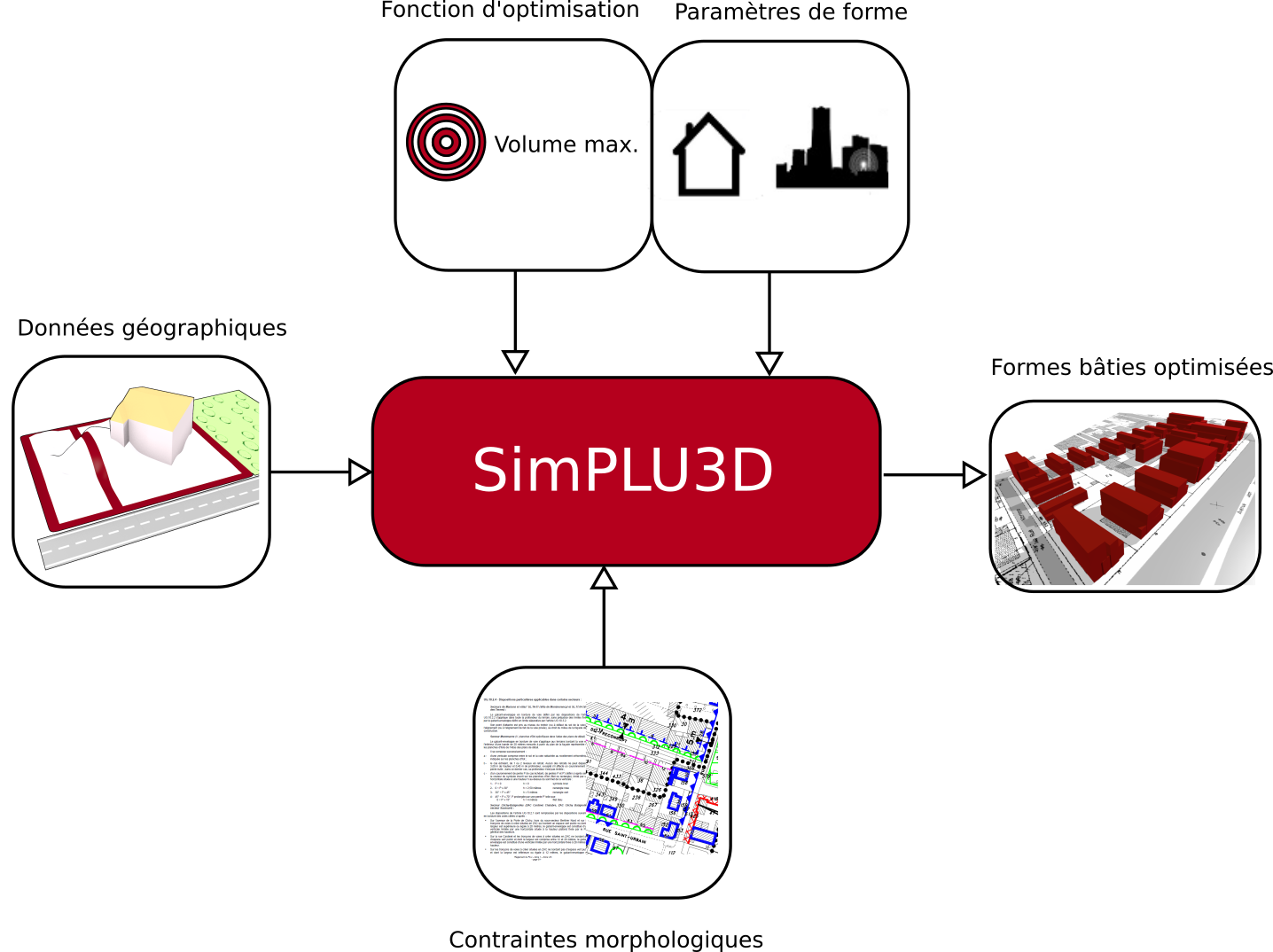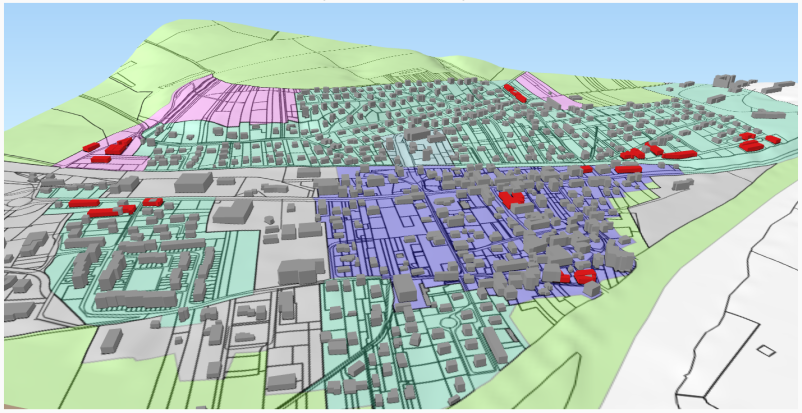| layout | title | permalink | lang | page_order |
|---|---|---|---|---|
page |
Tools |
/en/tools/ |
en |
5 |
The tools used, developed or maintained by the team. {% include tool_slider.html %}
<script src="{{ site.baseurl }}/assets/js/hal.js" charset="utf-8"></script>SimPLU3D is a set of Free and Open-Source Java libraries allowing the simulation of 3D built configurations that optimize a numerical utility function under the respect of morphological constraints. These libraries are used to question the relations between morphological constraints (that may appear in local urban regulation) and the produced urban fabric at the scale of a district or a whole city. The SimPLU3D approach is generic, as it is possible to use customized constraints, utility functions or type of geometric shapes.

When applied on local urban regulation, this library is notably used to answer to the following questions:
- How many dwellings may be built on a parcel ?
- How may the urban fabric of a district evolve if the local urban regulation is changed ?
- Could the future buildings cause too important shadowing on the neighborhood parcels ?
All the necessary libraries are available in the GitHub SimPLU3D organisation and are developed and maintained by the STRUDEL team of the LASTIG lab from IGN.
For more information, visit the SimPLU3D website. A tutorial is in particular available to help you set up your own simulations.

Finally, SimPLU3D is usable with OpenMOLE thanks to a specific OpenMOLE module.
<script defer> getPublicationsById(["hal-01650530", "tel-02497711", "tel-02525138", "tel-01092212", "hal-02280486", "hal-01650530", "hal-01882706", "hal-01888422", "hal-02176408", "halshs-00776240"], "simplu"); </script>The ArtiScales simulation platform integrates regional and local planning policies targetting residential development and its regulation. ArtiScales couples 2 models: MUP-City and SimPLU3D.

These libraries are available on the ArtiScales GitHub organisation and are developped and maintained by Maxime Colomb with the help of the STRUDEL team of the LASTIG lab from IGN.
For more information, visit the ArtiScales website.

Finally, ArtiScales can be used in distributed environnements thanks to OpenMOLE and the OpenMOLE module.
<script defer> getPublicationsById(["tel-02497711"], "artiscales"); </script>The original libRjmcmc library, written in C++.
librjmcmc4j, its java version.
librjmcmc4s, its scala version.
nm.

OpenMOLE is a free and open-source platform devoted to simulation model exploration, developed at the Complex System Institute of Paris (ISC-PIF). It offers tools to run, explore, diagnose and optimize your numerical model, taking advantage of distributed computing environments. OpenMOLE offers to embed your already developed model, in any language (Java, Binary exe, NetLogo, R, SciLab, Python, C++...).
OpenMOLE methods allows to perform various kind of Design of Experiments (DoE) : real sensitivity analysis, calibration on mono/multi criterion, pattern diversity research in model dynamics, custom design of experiments, data processing....
STRUDEL team papers featuring the use of OpenMOLE
<script defer> getPublicationsById(["hal-01650530", "tel-02497711", "tel-02525138", "tel-01092212",], "openmole"); </script>A Dempster-Shafer (D-S) engine based on eVidenZ, an efficient D-S engine developed in C++ by the LRDE (Epita Research and Development laboratory).
evidence4j is a java library (as its name suggests).
For more information on eVidenZ, the original C++ engine, refer to the eVidenZ webpage.
Code.
{% include tool_functions.html %}
